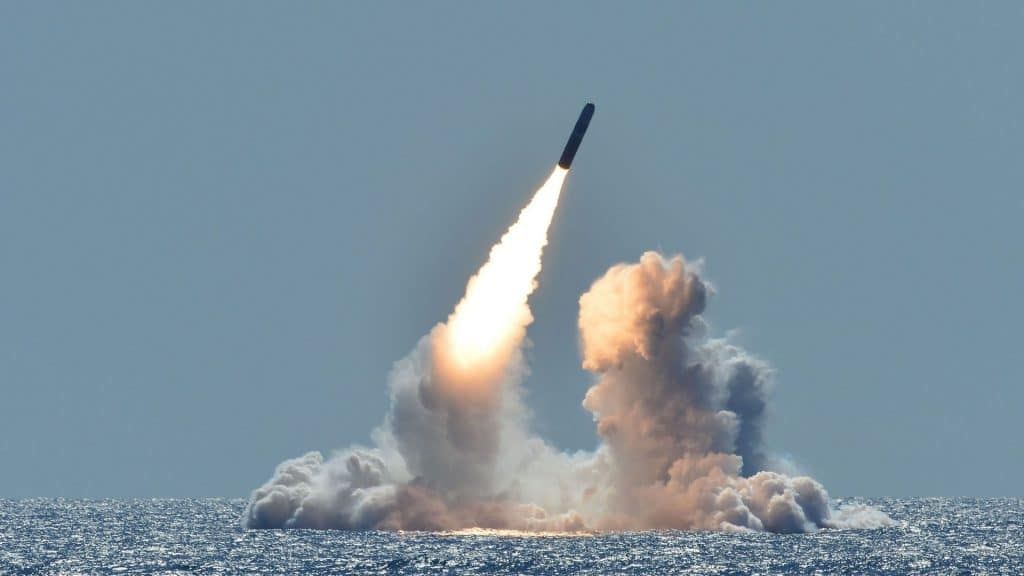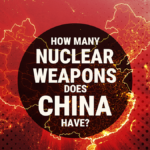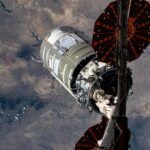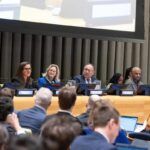The US nuclear arms control community needs a strategic plan
By Stewart Prager | June 24, 2024
 A Trident II D5 missile test. The US military, along with others around the world, is upgrading its nuclear weapons systems. Credit: US Navy/Mass Communication Specialist 1st Class Ronald Gutridge.
A Trident II D5 missile test. The US military, along with others around the world, is upgrading its nuclear weapons systems. Credit: US Navy/Mass Communication Specialist 1st Class Ronald Gutridge.
It is a commonplace that the danger of nuclear weapons is becoming more severe year by year. This is reflected in the Bulletin’s Doomsday Clock, for which the time to midnight has declined steadily since 1996. At this trend, the international security situation will continue to grow even more perilous, despite the ongoing efforts of the US arms control community.
To avert such a tragic outcome and drastically slash nuclear risk, the arms control community needs a new approach. It is usual within the scientific community, when faced with a grand challenge, to erase the blackboard, think fresh, and develop a new vision and strategic plan—with great positive effect in many sub-fields. Yet, such brainstorming and planning is not underway in the field of US nuclear arms control.
The US nuclear arms control community has been extremely resourceful and effective, with many past successes despite its constrained resources. However, the current approach of the collection of arms control organizations—each with independent efforts and plans—is unlikely to map to a more secure future. It is now the time for members of this community to challenge themselves with a community-wide effort to develop a strategic plan commensurate with the challenge of reducing nuclear risk.
Losing the debate. Currently, the United States is increasing the capability of its nuclear weapons through its massive modernization program. With this escalating capability—and the growing political pressure for further expansion to respond to nuclear plans in China and Russia—in 10 years the prominence of nuclear weapons will likely be even greater than it is today.
Societal forces that argue for increased dominance of nuclear weapons as providers of security have far larger influence on US policy than arms control advocates—and are winning the debate.
Funding for the nuclear weapons complex in 2024 is approaching $70 billion. The annual congressional lobbying effort that spawns is funded at over $100 million. Lobbying for nuclear weapons exceeds by several-fold the entire budget for all activities within the arms control community, which includes research, education, information dissemination, policy analysis, and lobbying. The relative persuasive power of arms control advocates likely exceeds its relative funding; ideas are not measured by the dollar. But the current level of effort and the approach for nuclear threat reduction advocacy are sorely inadequate, despite the creative, savvy, and persistent work of this community.
The arms control community is sufficiently under-resourced that it is difficult to free up the energy and time for a process of strategic planning, given the challenges of preserving even the funding currently available. However, it is at such a time that strategic planning is most crucial and must be provided priority.
The need for a strategic plan. The US arms control and disarmament community is united in the overarching goal of reducing the salience of nuclear weapons in international relations. But the community lacks not only a plan on how to fulfill that goal, but even a common statement of its grand challenge. An example of such a statement is “to alter the US nuclear arsenal and posture to accomplish global arms reduction in 10 years and disarmament in 20 years.”
A key constraint on any grand challenge is that it be achieved in a given time period. For example, such is the case with the setting of net-zero carbon dioxide targets. Even the objective of nuclear disarmament above—as broad as it is—already stands in stark contrast to the current situation in the field. The nuclear arms control community does not possess a defined challenge, let alone a plan to accomplish long-term goals. Absent a plan—or even the contours of a plan—actions toward nuclear arms control remain opportunistic and reactive, responding to congressional demands or news events of the moment. The long-term challenge of arms control requires long-term planning.
A plan for nuclear arms control and disarmament could include various elements such as large-scale outreach to the public, upgraded interactions with Congress, strategic countering of messaging promulgated by the nuclear weapons complex in favor of nuclear weapons primacy in security, as well as more unorthodox actions. Surely, those arguing in favor of more nuclear weapons development for decades to come do have and benefit from long-term plans.
Process and participation. The early stages of the strategic planning process should be free from constraints of resources and current organizational structures. Initial effort should focus on the question of what the arms control community would do if it were bound only by its ideas.
Such a process could address the following questions in sequence:
- What is the grand challenge to be achieved?
- What are the conceptual elements to accomplish the challenge?
- How would the elements be operationalized, with intermediate time-bound accomplishments?
- What organizational structures are required?
- How much would the plan cost, and what could be accomplished with partial funding?
The process to develop a strategic plan requires that the arms control community come together with common cause, unfettered by organizational identity, open to various strategic approaches and goals. It could be open to all who are interested, informed, and involved in arms control work—whether they have been trained in the natural sciences, political sciences, or any other field. Participants in the process contribute as individuals, building on their viewpoints and experiences, not as representatives of organizations. This is especially critical for those who facilitate or guide the process. To be a true community-based process, it should not be led by a particular organization, although it could be crucial that the leading arms control organizations encourage the planning process. The role of organizational structures can be considered and incorporated into the plan throughout the process, thereby strengthening the arms control organizations.
The process will require a series of meetings, evolving from assessment of broad goals to approaches to accomplish the goals to more detailed plans. It will take effort—and time—to coalesce to a common vision and plan, from a starting point of possibly disparate perspectives. Such a process could require perhaps one to two years, depending on the intensity of the effort.
The process described above has been proven to work in many contexts. It is modelled after strategic planning processes that sub-fields of physics have pursued for decades. It is meant to be illustrative. There are many similarities between the arms control community and some physics sub-fields: the presence of a lofty, multi-decade grand challenge of major importance to society; an expert community dedicated to the common cause, but consisting of a variety of organizations, viewpoints, and self-interests; the absence of funding at the time of the planning.
Despite the technical and sociological challenges of bringing a community of people with strong views together toward a common plan, the process in the physics community succeeds, and it does so without suppressing individuality. The driving force is that all members of the community realize that only by forming a common plan can the physics ambitions be achieved. The same aspiration should animate the arms control community.
There are also important differences between the physics community and the arms control community: Physics grand challenges mainly involve science and engineering, whereas arms control challenges largely involve policy and politics, and related social sciences. Moreover, the physics community is much larger and better funded, making it more easily able to devote time and resources to the necessary strategic planning of the field. Physics is also mainly funded through government support, often substantial, while the arms control community is mostly privately funded, often with uncertain resources.
The opportunity. With a diverse array of nuclear arms control organizations, the United States is unique in having a robust community of arms control activists in place—and grounded in a history of accomplishments spanning eight decades. Today’s US arms control community has a collection of dedicated non-governmental organizations and that operate in a country whose civil liberties enable advocacy and activism.
In the majority of the nine nuclear weapons states, expression of views—particularly dissenting views—on nuclear weapons carries risks. And in the other nuclear weapon states without such risks, the infrastructure of arms control groups is unfortunately weak. That is not the case in the United States. US activists have therefore an opportunity—arguably a responsibility—to use their unimpeded right to question US nuclear weapons policy and develop a common strategic plan. A more active and unified nuclear arms control and disarmament community in the United States can also be greatly influential in other nuclear weapon states.
What it can achieve. If a common plan is developed that has a reasonable likelihood to transform the nuclear weapons landscape, then funding would be sought, presumably through the philanthropic sector. Funding in the field is not large currently. But one contributing reason for that scarcity is the absence of an argument for transformative progress. The likelihood of a large increase in funding (if required by the plan) is difficult to predict. But a principle of strategic planning—besides the obvious one that without a plan funding will not increase—is to be ready with a plan for when funding opportunities arise. One cannot wait for a sign of possible availability of funding—or some forcing event—to formulate a plan.
If partial funding were received, progress in arms control could accelerate, even if short of a full plan. If no additional funding were received, the exercise would likely have generated ideas to test run with current funding.
The task of devising a strategic plan could be daunting, given the complexity, time-varying dynamics, and unpredictability of the national and geopolitical nuclear landscape—as well as the diversity of the community and the agendas of its members. The process could bear fruit if entered with humility and appreciation of its many—perhaps intractable—challenges.
Some might assume that devising a strategic plan for the problem of nuclear arms control and disarmament is an ill-posed challenge, or that the best plan is to have no plan, characterized by multiple weakly coordinated independent efforts. Or perhaps that the current effort, with minor modifications, is optimal. Even if this community planning process would result in one of these outcomes, this in itself would be useful. But once members of the US arms control community head to the table and engage in the creative experiment of strategic planning, there is little doubt they will come up with fresh ideas and a new vision. We should not wait for a negative external event to catapult arms control to the national agenda—for then it will be too late.
Together, we make the world safer.
The Bulletin elevates expert voices above the noise. But as an independent nonprofit organization, our operations depend on the support of readers like you. Help us continue to deliver quality journalism that holds leaders accountable. Your support of our work at any level is important. In return, we promise our coverage will be understandable, influential, vigilant, solution-oriented, and fair-minded. Together we can make a difference.
Keywords: arms control, disarmament, strategic plan
Topics: Analysis, Nuclear Risk, Nuclear Weapons















